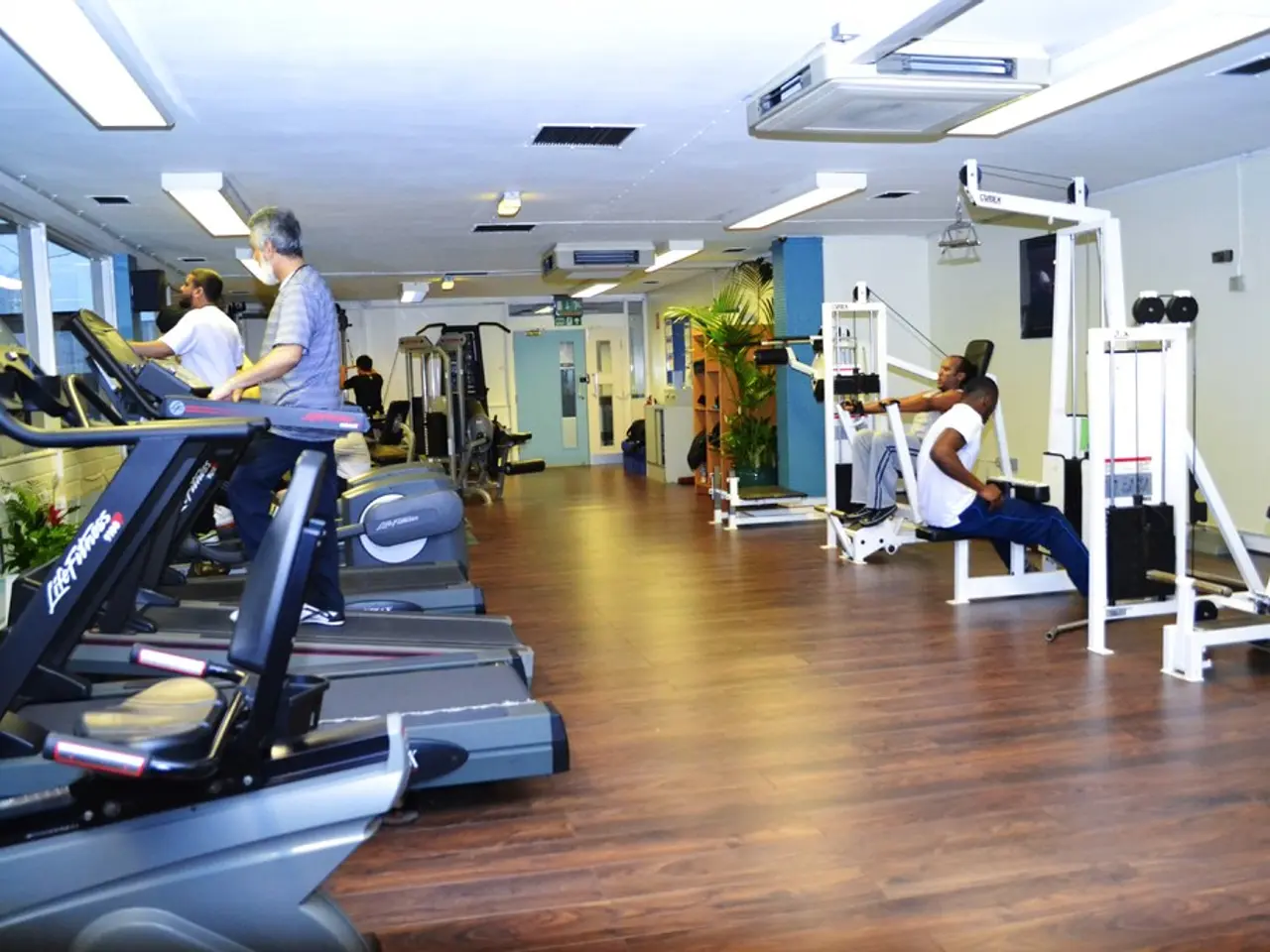Harmful Physical Activities Harm Your Body More Rapidly Than Sitting Post-40
As we age, it's essential to approach exercise with caution to avoid causing more harm than good. Here are some key points to consider when planning your workout routine after the age of 40.
Firstly, common gym exercises can accelerate wear and tear on the body if not performed correctly. This is especially true for high-impact activities like running, jumping, and heavy weightlifting, which should be avoided to prevent damage to joint and bone structure.
Plyometric exercises such as box jumps, plyo pushups, burpees, and lateral bounds can be particularly harmful, especially if one is not accustomed to them. Sit-ups and crunches, if executed improperly, can overwork the hip flexors and spine while minimally engaging the deep core muscles. This can lead to injury, as many people may find themselves pulling on their necks and going back down with a straight unprotected spine.
Movement coordination becomes "less intuitive" as one ages, making it crucial to maximize attention to alignment. Exercises that crank on the lower back, knees, and shoulders can accelerate damage if not adapted after age 40. For example, behind-the-neck lat pulldowns or presses should be avoided due to the strain they put on the rotator cuff and neck. Similarly, Olympic lifts (snatches, cleans, deadlifts) should be avoided without proper 1:1 coaching due to the risk of injury.
Sprinting sports like basketball or soccer may pose a higher risk of injury for those over 40 who do not regularly play them. Long-distance, high-impact running can break down joints more than it builds the body up due to improper technique. Twisting exercises like Russian twists, cable woodchops, and landmine rotations can irritate the low back for those with limited mobility.
On a more positive note, sedentary habits increase all-cause mortality, cancer risk, CVD mortality, and chances of developing metabolic disorders. Therefore, it's important to maintain an active lifestyle, even if it means starting with low-impact exercises or activities like rucking (wearing a weighted backpack while walking or hiking).
Older athletes should have a longer warm-up, more repetitions, and practice movements before jumping into exercises they haven't done since high school. This gradual approach can help reduce the risk of injury and ensure that exercises are performed correctly.
In conclusion, while it's important to stay active as we age, it's equally important to approach exercise with caution and adapt our routines to our changing bodies. By paying attention to alignment, choosing exercises that suit our physical condition, and taking a gradual approach, we can continue to enjoy the benefits of exercise well into our golden years.
Read also:
- Hospital's Enhancement of Outpatient Services Alleviates Emergency Department Strain
- Increased Chikungunya infections in UK travelers prompt mosquito bite caution
- Kazakhstan's Deputy Prime Minister holds discussions on the prevailing circumstances in Almaty
- In the state, Kaiser Permanente boasts the top-ranked health insurance program





